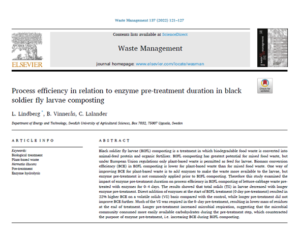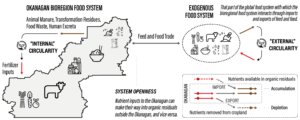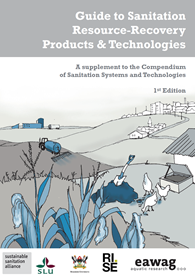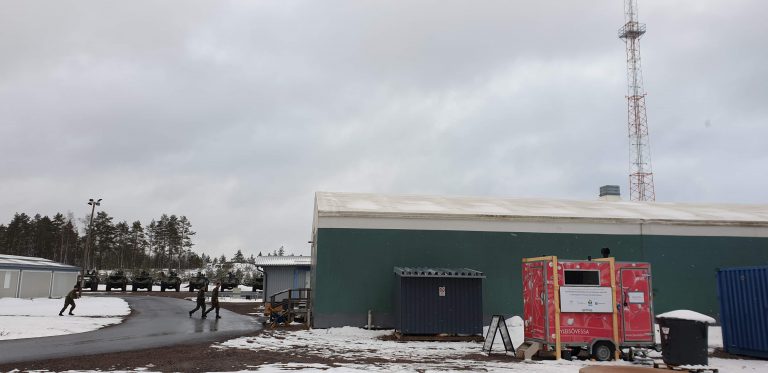 Check out our latest publication in Waste Management Process efficiency in relation to enzyme pre-treatment duration in black soldier fly larvae composting. We investigated the impact of enzyme pre-treatment time duration on the efficiency, in terms of biomass conversion efficiency and material reduction, in black soldier fly larvae (BSFL) composting of lettuce and cabbage (vegetable cuttings from Grönsakshallen Sorunda). We found that direct addition of enzyme (i.e. no pre-treatment time, but adding the enzymes as the same time as the larvae) was the only treatment that significantly improved process efficiency.
Check out our latest publication in Waste Management Process efficiency in relation to enzyme pre-treatment duration in black soldier fly larvae composting. We investigated the impact of enzyme pre-treatment time duration on the efficiency, in terms of biomass conversion efficiency and material reduction, in black soldier fly larvae (BSFL) composting of lettuce and cabbage (vegetable cuttings from Grönsakshallen Sorunda). We found that direct addition of enzyme (i.e. no pre-treatment time, but adding the enzymes as the same time as the larvae) was the only treatment that significantly improved process efficiency.
Category: Publications
New publication on Co-composting of banana peel and orange peel waste with fish waste to improve conversion by black soldier fly (Hermetia illucens (L.), Diptera: Stratiomyidae) larvae
This study aimed to enhance the biodegradable solid waste management of low-quality food and agro-industrial waste streams, in terms of BSFL process performance efficiencies by means of co-composting. A fibre-rich, hard to degrade waste stream such as fruit peels by BSFL, was co-composted with a low-quality protein-rich waste stream (fish waste). Results show that co-composting has the ability to increase the BSFL composting efficiencies from nutrient-imbalanced substrates such those used in this study. Protein content increased as more fish waste was added into the substrate mixtures. Biomass conversion rate was generally increased by the addition of fish waste in the substrate mixtures and the highest conversion and BSFL weight achieved was 25 % and 269 mg larva-1, respectively, with 75 % fish waste (12 % protein addition) inclusion. However, BSFL treatment efficiency parameters showed wide variation with inclusion of 75 % fish waste in the substrate, possibly owing to differences in nutritional composition (especially fat content) of different fish waste batches. Lower variations in process efficiency renders higher reliability of the treatment process. Therefore, 25 % inclusion of fish waste (4 % protein addition) was concluded to be beneficial and sufficient enough to improve the overall BSFL process efficiency.
To read more, press here.
Isibika A., Vinnerås B., Kibazohi O., Zurbrügg C. & Lalander C. (2021) Co-composting of banana peel and orange peel waste with fish waste to improve conversion by black soldier fly (Hermetia illucens (L.), Diptera: Stratiomyidae) larvae. Journal of Cleaner Production 318, 128570
Assessing the Circularity of Nutrient Flows in the Okanagan Bioregion, BC Canada
The concept of “circular biobased economy” has become an important pillar of a new generation of policies that are expected to solve the current sustainability crisis. Moving towards a circular biobased economy crucially depends on biological and technical processes capable of recirculating plant nutrients – from used biobased products back to the production of food, feed, fibre, fuel, and so forth.
Nutrient flow analyses can help identify drivers of unsustainable patterns and opportunities for moving towards more sustainable patterns. As part of a broader food system design project in the Okanagan Bioregion, BC Canada, we analysed the flows of nitrogen, phosphorus, potassium, and magnesium to help stakeholders in the bioregion better understand current levels of nutrient circularity and how it could be improved.

Can Sweden achieve a circular economy for phosphorus?
The need for a more circular use of nutrients, notably phosphorus (P), has been widely discussed in Sweden, not least in response to the release of the new enquiry on sustainable use of sewage sludge (SOU 2020:3). But what would a transition to a circular economy for phosphorus look like? How much phosphorus is needed for biomass production in Sweden? And what possibilities are there to replace the widely used virgin mineral phosphorus with phosphorus from secondary sources?
Guide för sanitära resursåterställningsprodukter & tekniker är nu publicerad!

Vi är mycket glada att dela med oss av den första upplagan av Guide to Sanitation Resource Recovery Products & Technologies. Guiden är en populärvetenskaplig publikation som ger en översikt över möjliga resurser som kan återvinnas och ger vägledning om behandlingsprocesser för att uppnå säkra produkter för återanvändning. De specifika målen för detta dokument är:
- Att utsätta användaren för ett brett spektrum av återvunna sanitetsprodukter och innovativa behandlingstekniker.
- Att hjälpa användaren att utforma funktionella lösningar för resursåtervinning genom att illustrera kopplingarna mellan sanitetsingångar, behandlingsteknik och återvinningsbara produkter.
- Att ge en översikt av grundläggande information om designaspekter, driftskrav och hälso-, säkerhets- och sociala överväganden relaterade till resursåtervinningsteknik och produkter.
- Beskriv och presentera teknologispecifika fördelar och nackdelar.
Guiden för sanitära resursåterställningsprodukter och tekniker är främst en referensbok. Den är avsedd att användas av ingenjörer, planerare, slutanvändare, forskare, teknikutvecklare, sanitetsentreprenörer, icke-statliga organisationer (NGO) och studenter som är intresserade av att skapa cirkulära system för resursanvändning. Det syftar till att stödja och möjliggöra beslutsfattande för ökad resursåtervinning genom att tillhandahålla information om viktiga beslutskriterier för en rad återvunna produkter och behandlingsteknik, och därigenom lyfta fram de olika möjligheterna för resursåtervinning.
Länk för att ladda ner guiden:
https://pub.epsilon.slu.se/21284/
https://www.susana.org/en/knowledge-hub/resources-and-publications/library/details/4008
Guide to Sanitation Resource Recovery Products & Technologies published!

We are very pleased to share with you the 1st edition of the Guide to Sanitation Resource Recovery Products & Technologies. The Guide is a popular science publication that gives an overview of the possible resources that can be recovered and provides guidance on treatment processes to achieve safe products for reuse. The specific objectives of this document are:
- To expose the user to a broad range of recovered sanitation products and innovative treatment technologies.
- To help the user to design functional solutions for resource recovery by illustrating the linkages between sanitation inputs, treatment technology and the recoverable products.
- To provide an overview of basic information regarding design aspects, operational requirements, and health, safety and social considerations related to resource recovery technologies and products.
- Describe and fairly present technology-specific advantages and disadvantages.
The Guide to Sanitation Resource Recovery Products and Technologies is primarily a reference book. It is intended to be used by engineers, planners, end-users, researchers, technology developers, sanitation entrepreneurs, non-governmental organisation (NGO) staff and students who are interested in creating circular systems for resource use. It aims to support and enable decision making for increased resource recovery by providing information on key decision criteria for a range of recovered products and treatment technologies, thus highlighting the diversity of options available for resource recovery.
Links to download the guide:
https://pub.epsilon.slu.se/21284/
https://www.susana.org/en/knowledge-hub/resources-and-publications/library/details/4008
Publication on field testing alkaline urine dehydration at pilot-scale in Finland
In early 2019, we designed and installed a pilot shell system to dry fresh urine collected from about 100 toilet users each day (or a maximum of 30 liters of urine day-1). The system was implemented at a Finnish army training ground (Camp Mauri) belonging to Pori Brigade, which is a garrison in Säkylä, Finland and was used for a period of three months between March and May 2019. In a new publication in the journal Frontiers in Environmental Science, we describe results of the evaluation of the technology. The publication can be openly accessed here:
Simha P, Karlsson C, Viskari E-L, Malila R and Vinnerås B (2020). Field Testing a Pilot-Scale System for Alkaline Dehydration of Source-Separated Human Urine: A Case Study in Finland. Front. Environ. Sci. 8:570637. doi: 10.3389/fenvs.2020.570637

Publikation om fältarbete av alkalisk urintorkning i pilotskala i Finland
I början av 2019 designade och installerade vi ett pilotskalssystem för att torka färsk urin som samlats in från cirka 100 toalettanvändare varje dag (eller högst 30 liter urin dag-1). Systemet implementerades på en finsk arméutbildningsplats (Camp Mauri) som tillhör Pori Brigade, som är garnison i Säkylä, Finland och användes under en period av tre månader mellan mars och maj 2019. I en ny publikation i tidskriften Frontiers in Environmental Science, vi beskriver resultaten av utvärderingen av tekniken. Publikationen kan öppnas här:
Simha P, Karlsson C, Viskari E-L, Malila R and Vinnerås B (2020). Field Testing a Pilot-Scale System for Alkaline Dehydration of Source-Separated Human Urine: A Case Study in Finland. Front. Environ. Sci. 8:570637. doi: 10.3389/fenvs.2020.570637

New book chapter discusses alkaline urine dehydration at scale

In a bio-based circular economy, domestic wastewater has a significant role to play. By separating wastewater into different fractions at the source, it is possible to create new pathways for recycling resources. In a book chapter published in Current Developments in Biotechnology and Bioengineering, Simha et al. discuss about the most nutrient-rich wastewater fraction, human urine. We present a new, simple, yet potentially revolutionary nutrient recycling technology — alkaline urine dehydration. We then describe how this technology can be combined with urine-diverting toilets and integrated with existing sanitation infrastructure to create a service chain that safely collects, contains, transports, and applies urine as fertilizer. The potential benefits, risks, knowledge gaps, and challenges surrounding the implementation of a urine-diverting and dehydrating sanitation system are discussed. Finally, the prospect of creating smart toilets and digitizing the proposed sanitation system are explored. To read the full chapter, follow the link below:
Simha, P., Senecal, J., Gustavsson, D. J., & Vinnerås, B. (2020). Resource recovery from wastewater: a new approach with alkaline dehydration of urine at source. In Current Developments in Biotechnology and Bioengineering (pp. 205-221). Elsevier.
Alternatively, Click here to access the freely available pre-print version of the chapter on RG
New publication on fate of Ascaris at various pH, temperature and moisture levels
A new study assessed the inactivation of Ascaris eggs under various conditions and observed that the exposure of Ascaris eggs to elevated pH (10.5–12.5) at temperatures <27.5 °C for >70 days had no effect on egg viability. To accelerate the inactivation of STH, an increase in the treatment temperature is more effective than pH increase. Alkaline pH alone did not inactivate the eggs but can enhance the effect of ammonia, which is likely to be present in organic wastes.
Follow the link to access the article: https://doi.org/10.2166/wh.2020.264
Senecal, J., Nordin, A., & Vinnerås, B. (2020). Fate of Ascaris at various pH, temperature and moisture levels. Journal of Water and Health.
